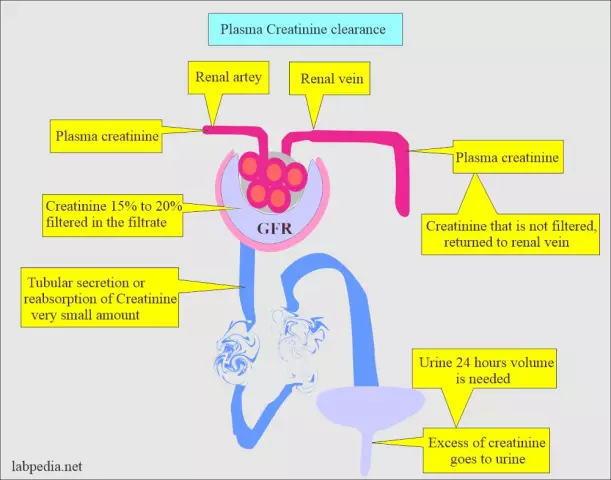- Author Curtis Blomfield [email protected].
- Public 2023-12-16 20:44.
- Last modified 2025-01-23 17:01.
Estradiol is a biologically active substance. It belongs to steroids and circulates in the blood in combination with globulin, which is responsible for the binding of sex hormones. In women, estradiol is secreted by the ovaries and adrenal cortex, in men - by the testes. In addition, it occurs during the formation of androgens (sex hormones).

Value of estradiol
In men, this estrogen affects the formation of ejaculate, improves oxygen metabolism and is involved in the regulation of the nervous system, increases blood clotting, stimulates metabolism, is responsible for sexual desire.

In women, this compound affects the formation of the reproductive system, mental and physical condition. Under its influence, follicles grow, the thickness of the endometrium increases. In addition, it is responsible for the formation of the female figure and he althy skin.
In the female body, estradiol is increased to the maximum in the late follicular phase. After ovulation, its concentration decreases. High levels of this hormone are also observed during pregnancy. In postmenopause, its level is reduced. Estradiol in this period reaches a concentration that inthe norm is typical for the male body (is 15-71 pg / ml).
It is worth noting that such fluctuations in the concentration of estradiol are considered physiological, but there are a number of pathologies that are also accompanied by a change in the level of this hormone.
Estradiol elevated: why?
Elevated levels of this steroid are observed in the following pathologies:
• thyroid disorders;
• Follicle persistence;
• Presence of cysts or tumors in the ovaries;
• Estradiol elevated in gynecomastia;
• cirrhosis of the liver;
• endometriosis;
• obesity.
In addition, estradiol is elevated with certain medications (such as anabolic steroids).
The most common etiological factor in the growth of the level of this hormone in a man's body is overweight, impaired testosterone secretion or zinc deficiency, as well as age-related changes.
Reduced estradiol: etiology
If we talk about the reasons for the decrease in the concentration of estradiol, then the following etiological factors should be noted:

• smoking;
• exercise;
• disorders of the pituitary gland;
• endocrine diseases;
• hormonal imbalance;
• vegetarianism;
• dramatic weight loss;
• hypogonadism;
• Chemotherapy for oncopathology.
Determination of estradiol concentration
In case of hormonal imbalance, an endocrinologist usually recommends donating bloodfor appropriate laboratory analysis. Estradiol is determined under certain conditions - the analysis is done on an empty stomach. Women need to donate blood on the 3rd-5th day of the cycle. The day before, physical activity should be limited. It is also forbidden to smoke or drink alcohol.
The most common indications for laboratory diagnosis are irregular menstruation, infertility, uterine bleeding in women, as well as signs of feminization and hypofunction of the gonads in men. When a low or too high level of estradiol is confirmed, the doctor may prescribe appropriate treatment.






